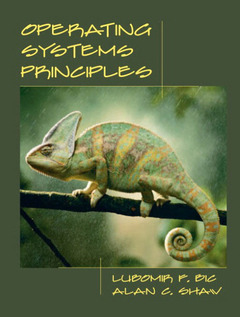Description
Operating systems principles
Authors: BIC Lubomir, SHAW Alan
Language: English
Subjects for Operating systems principles:
Approximative price 148.67 €
Subject to availability at the publisher.
Add to cart542 p. · 18x24 cm · Hardback
Description
/li>Contents
/li>Comment
/li>
For one-semester, junior/senior-level courses in Introduction to Operating Systems and Principles of Operating Systems in the departments of Computer Science and Engineering and Information and Computer Science.
Responding to a major paradigm shift from single-processor to distributed and parallel computer systems, this compact text is the first of its kind to integrate those fundamental ideas, principles, and concepts in both centralized and distributed computing that remain constant even as new, more advanced systems are introduced. In addition, it presents many examples from commercial and research operating systems as a way to immediately illustrate the relevance of particular concepts.
I. PROCESS MANAGEMENT AND COORDINATION.
2. Basic Concepts: Processes and Interactions.
3. Higher-Level Synchronization Schemes.
4. The OS Kernel: Implementing Processes and Threads.
5. Scheduling.
6. Deadlocks.
II. MEMORY MANAGEMENT.
7. Physical Memory.
8. Virtual Memory.
9. Linking and Sharing.
III. FILE AND I/O MANAGEMENT.
10. File Systems.
11. I/O.
IV. PROTECTION AND SECURITY.
12. The Protection and Security Interface.
13. Internal Protection Mechanisms.
Programming Projects.
- Emphasis on basic principles and concepts, gives students a solid knowledge base that does not become obsolete with the introduction of new, more advanced systems.
- Frequent, concrete examples, reinforces students understanding of the presented principles and concepts.
- Case studies Appear throughout the text, shows students the relevance of the presented principles and concepts in real-world systems.
- Approximately 20 constructive or analytical problems in each chapter, encourages students to learn, understand, and apply concepts.
- An extensive set of programming exercises, allows instructors to use these exercises as a supplement to the theoretical presentation or as the basis of a special follow-up lab course.
- A uniform, C-like notation, gives students a clear pr




